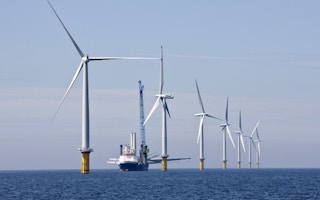China and South Korea’s planned investment in offshore wind farms, amounting to close to $25 billion in the near future, could also affect on rare earths production.
The increasing demand for environment-friendly and energy-efficient power generation is forcing China and South Korea to invest in offshore wind farms.
The steel-making industries of both countries need huge amounts of power to fire up their factories.
Rare earths industry pundits said the extent of these projects, which could produce close to 33 gigawatts of electricity by 2019 to 2020, would further push the demand for rare earths in the Asia-Pacific Region.
Oceanpowermagazine.net reported that “the South Korean government has joined the frenzy regarding offshore wind development in the Asia-Pacific region. On the heels of China’s big investment announcement in offshore wind energy capacity, the South Koreans, who currently import 97 percent of their energy needs, will invest $9 billion U.S. dollars to develop a 2.5 gigawatt offshore wind farm by 2019, the largest in the country.
“This is not just about providing much-needed domestic energy production. The South Korean government is leading the project and is planning to procure turbines from eight local suppliers. The intent is to also build capacity in the wind turbine business, taking on Europe, the U.S. and China. The South Koreans will spend about $1 billion U.S. this year on feed in tariffs to support solar, wind and other renewable energy projects.”
The Chinese Communist Party’s official newspaper, The People’s Daily, reported that China plans to increase installed capacity of its offshore wind power sector to 30 gigawatts by 2020 with investments of almost $16 billion in U.S. dollars.
China is new to the offshore wind energy market with only 142,500 kilowatts of installed capacity at the end of 2010, the result of only one project, the Shanghai Donghai Bridge.
The various and extensive use of permanent magnets in electronic gadgets, radars, hybrid cars, energy efficient solar panels and wind turbines will continuously push the demand and price for rare earths in 2012, IBTimes.com earlier reported.
This is the assessment of U.S. rare earths producer Molycorp CEO Mike Smith in a dialogue with company shareholders led by Baron Capital Chairman and CEO Ron Baron.
“We’re talking double-digit compounded annual growth rates for the foreseeable future. Nobody knows when that’s going to stop so that’s a huge growth market for us. Those magnets are going to be used in hybrid and electric cars.
“They’re already used in today’s cars. When you look at the wind power business, the wind turbines that are being converted are using permanent magnet generators so they can be more efficient and reliable than the old inductive coil gear-box type systems. So those are the huge, huge growth areas, but as long as you and I need gasoline we still have to have rare earths,” Smith said during the event aired over CNBC.
Smith noted that the current supply constraints, with about 95 percent of world’s supply coming from China, there is now pressure on prices of non-Chinese suppliers.

















